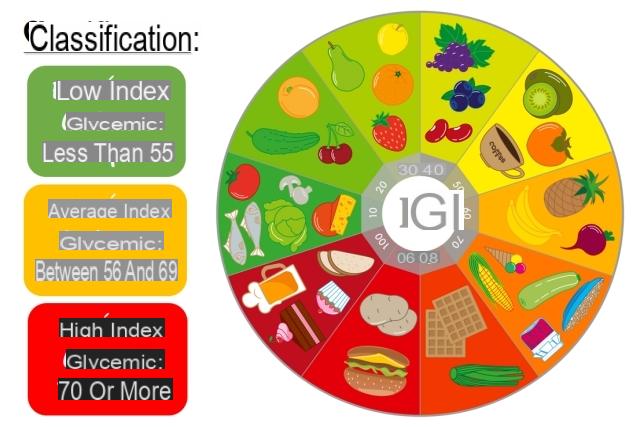
Glycemic index and flours, how are they related?
THEindex glicemico, abbreviated with the initials IG, is the rate at which the blood glucose level rises after taking a food containing 50 gr. of carbohydrates.
Usually it is expressed as a percentage taking as a point of reference white bread which expresses itself with 100%.
So if the glycemic index of a food X is 50%, this means that it raises blood sugar at a rate equal to half that of white bread.
Why this index is important for health? How does it relate to low-GI bread? Basically this value depends on the quality of the carbohydrates we ingest. A good diet should prefer fiber to sugar although both are important for our body. To what extent?
The flours used for the processing of bakery products like bread there are many and, among these, some are preferable to others for those suffering from diabetes, high cholesterol, blood sugar and other disorders related to digestion, weight and intestinal regularity.
A healthy diet must take into account the glycemic index
Before answering these questions, let's clarify why we have to deal, some more, some less, with our body's blood sugar levels. Our body self-levels the blood sugar, that is, the concentration of glucose in the blood.
It is essential for life because it nourishes the cells of our body through the blood. In healthy subjects, blood glucose fluctuates between 60 and 130mg / ld and ensures normal energy supplies to the brain. If the levels drop or rise, our body is severely affected. There are two hormones that regulate these levels: insulin and glucagon. The first is a hormone that lowers blood sugar levels. The second has the opposite effect.
After a large meal, your blood sugar will be high while after several hours of fasting this subsides. Leveling, in a healthy body, takes place via the two hormones mentioned above. White bread, therefore, is not recommended for those who have to keep this value under control. Usually the most attentive are diabetics but it is also an important value for athletes and for those suffering from high cholesterol and problems related to the digestive system and metabolism.
Low glycemic index bread: which flours to choose?
Now that we understand the functioning of blood glucose values we can devote ourselves to how to control it through food, specifically bread. It is a tasty food that we can hardly give up.
It gives us a pleasant sense of satiety and in our diet it is generally accompanied by appetizers and main courses. Which flours to choose for bread with a lower glycemic index than white bread?
The flours with the lowest glycemic index are those of whole wheat, rice, kamut, corn, avenza, quinoa, barley, buckwheat, millet, chickpeas, peas, broad beans, soy, beans and lentils. The less common hazelnut and almond flours are also included in the list.
Among these, those with the lowest GI they are chickpea flour (22) carob flour (12), barley flour (35) and almond flour (35) They are all very low GI but not all are easy to work with. The carob one, for example, is very sweet and must be mixed with another flour to obtain workable dough.
A good alternative is that of rye or that of barley. They are rich in fibers and ensure a good result in the processing of the dough.
As for chickpea flour, this is the most suitable for diabetics because it offers excellent processing results and gives life to truly delicious breads, pizzas and focaccias.
A standard low glycemic index bread recipe with almost any flour
A good low glycemic index bread recipe it is usually proportioned as follows: for each kilo of flour add 15 gr. of salt, just under a liter of warm water (or, 8 lit may be enough) and 200 gr. of mother yeast.
We advise you to prepare the dough in the evening and leave it to rest overnight, well covered and in the dark. The dough must be worked until it becomes smooth and homogeneous. It is advisable to make a cross cut on the leavened dough to prevent it from overflowing thanks to the effect of the mother yeast.
With a kilo of flour you will get a lot of dough, so you can also knead it into smaller blocks. For cooking it is recommended to use a temperature of 180 ° and never open the oven.
The duration varies according to the type of flour chosen but usually thirty minutes should be enough. You will notice this from the gilding of the surface. Once out of the oven, the house will be flooded with a pleasant smell of bread!


























